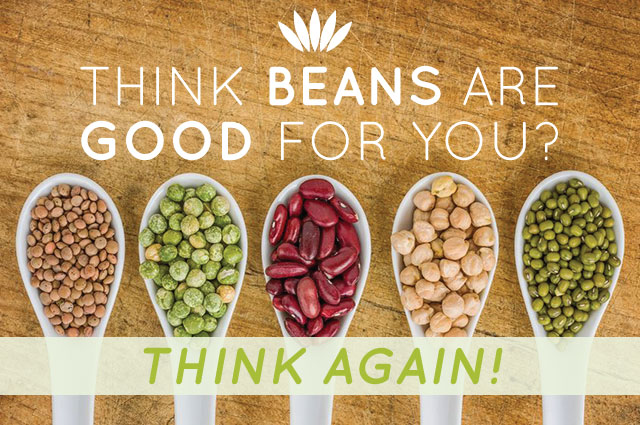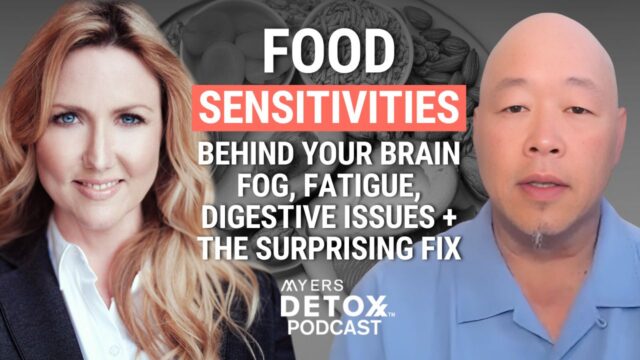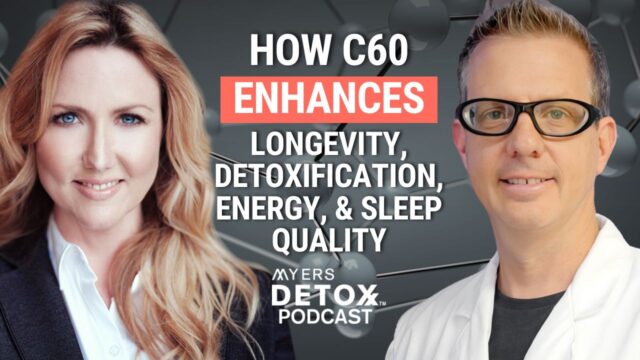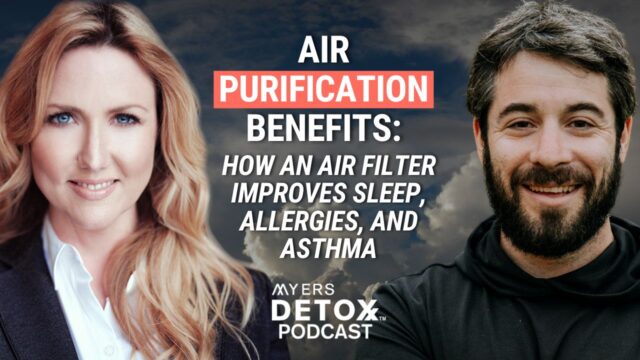Advocates of the Paleo diet advise to avoid legumes on the basis that ancient man did not consume them. But this is not accurate. The main issue with beans is they are not as nutritious as many are led to believe.
Eating a few servings a week of legumes is great if you tolerate them. They are a great source of magnesium. However, legumes do present certain issues that I discuss in this article. Furthermore, legumes are not as nutritious as many sites would have you believe. But I still think they are part of a Modern Paleo diet.
The main reason to take is easy on legumes is because they’re not very nutrient dense, and if you eat a lot of legumes and they replace more nutrient-dense foods (like meat), you’re not going to be maximizing nutrient density. Many of the nutrition labels you read on beans are from raw beans. They look far better on a label raw than cooked.
Contrary to popular Paleo opinion, there’s no evidence that including legumes in moderation, especially when they’re properly prepared to maximize nutrient bioavailability, and they’re eaten occasionally in the context of an overall diet that’s very nutrient dense, there’s no evidence to support the idea that they’re harmful.
Legumes are more Paleo that one might think. Dr. Stephan Guyenet posted an article outlining the evolutionary history of legume consumption. (18) He demonstrates that, contrary to popular Paleo belief, legumes were part of our ancestral diet. Recent analysis of Neanderthal tooth plaque revealed that they consumed wild varieties of peas and fava beans. (10) Since early humans are thought to have eaten a more diverse diet than Neanderthals, it is safe to assume that our human ancestors also ate legumes. Dr. Guyenet also points to several contemporary hunter-gatherer groups that consumed significant amounts of legumes, including the !Kung San of the Kalahari desert and the Australian Aborigines.
Beans and legumes are the primary source of calories for many people around the world. Traditional cuisines like those of India and Central and South America eat legumes as a major staple in the diet. However, they also employ very long cooking times and lengthy precooking preparation and detoxification methods like soaking and sprouting. Today, these lengthy cooking and preparation times are frequently not utilized to accommodate busier lifestyles and the fast pace of modern life. Traditional foods like legumes are better for you when prepared properly.
I cannot reiterate enough that everyone is different. Some people tolerate beans and legumes very well. Others break out in rashes, get migraines or develop digestive issues like IBS after a few refried beans for various reasons. To see if legumes work for you, eat them and see how you feel. If you want to eat your beloved beans, go ahead, but this post will at least serve to help you know what you’re eating.
Plant Toxins
Before Monsanto, Mother Nature had her own pesticide factory. All plants contain toxins. They have evolved over millions of years to prevent being eaten by pests, most notably humans. God forbid soy goes extinct from being over consumed. Becoming poisonous is a great defense because plants can’t run away.
It can be confusing because, in food, toxins are combined with beneficial nutrients. You can’t read a food label and be bowled over by the calcium or protein content. Plant toxins are not on the label. And some of these toxins prevent some of those nutrients on the food label from getting into you. So, it’s a good idea to reduce a nutrient amount on the label by a fraction.
Plant toxins pose far more of a risk to health than pesticides sprayed on crops. Americans eat 5,000 to 10,000 plants pesticides totaling 1.5 grams daily, but only .00009 grams of synthetic pesticide residues per day. (4) We must be mindful of the food toxins we put in our pie holes. That being said, let’s look at some of the yummy potential toxins you’ll be eating along with your bowl of baked beans.
The ultimate key in determining whether to eat a food is weighing the cost/benefit ratio – eating a plant based on its nutrient density versus its toxic load. This analysis can be done on any food, but let’s review the pros and cons of potential toxins in legumes:
Not So Evil Phytic Acid
A common misconception about phytic acid is that it is going to steal nutrients away from you. Not true. It simply prevents you from absorbing all the minerals like iron, for instance, in beans. The phytic acid binds to minerals and prevents their absorption.
Regardless, humans can tolerate moderate amounts of phytates without harm because our gut bacteria produce enzymes that break down phytate. (19) In fact, there’s even evidence that phytic acid may have some beneficial effects like preventing the formation of free radicals (making it an antioxidant) and binding to heavy metals in the body.
Phytic acid is normal to most plants so you needn’t worry about it. Kale and swiss chard have far more phytic acid than beans. But just because a food has some potentially toxic effects, like phytic acid, it doesn’t mean we can’t tolerate that food in some small amounts. It’s all about the dose. Phytic acid is in many healthy foods, like green veggies and nuts.
What this does mean is that if you were figuring that you were going to absorb a lot of nutrients from beans, which are sometimes purported to be a superfood, you may not be absorbing as much as you thought you would be because of the phytic acid content. Phytates make that bowl of lentils a lot less nutrient dense than the Nutrition Facts panel would have you believe.
Lectins
Lectins are a type of protein that can bind to cell membranes. They are vilified in the Paleo community because a few studies have shown that lectins can impair growth, linked to autoimmune disorders, damage the lining of the small intestine causing leaky gut, destroy skeletal muscle, and interfere with the function of the pancreas. Sounds serious, right?
Let’s examine this common Paleo myth. There are several reasons that these results cannot be extrapolated to humans. First, the animals consumed vast amounts of lectins—much more than a human would consume from eating a pile of legumes at lunch. And sure enough, these animals get extremely sick with leaky gut, inflammation, and a whole bunch of other problems, including cancer. Second, the lectins were from raw legumes. Hello. Humans eat cooked legumes, and cooking neutralizes the lectins found in most legumes.
In fact, cooking legumes for as little as 15 minutes or pressure-cooking them for 7.5 minutes almost completely inactivates the lectins they contain, leaving no residual lectin activity in properly cooked legumes. (16)
Finally, if you want to avoid lectins you’d have to remove a lot more than legumes from your diet to avoid them. Lectins are found in at least 53 fruits, vegetables, spices, including carrots, zucchini, melon, grapes, cherries, raspberries, blackberries, garlic and mushrooms. Lectins are found in high concentrations in GMO food, since lectins are often spliced into modified varieties in order to enhance “natural” pest and fungal resistance. (13) Translation: Avoid GMO’s.
This is not an invitation to stop eating legumes and other foods! It’s just an illustration that almost every plant we eat contains small amounts of toxins as this is how plants defend themselves. These low levels of toxins don’t harm the vast majority, and in fact, may even provide health benefits. According to Dr. Stephan Guyenet, many of the compounds we call “antioxidants”—like polyphenols found in blueberries, dark chocolate, etc. actually cause mild oxidative stress that upregulate our body’s natural defense systems. (20)
FODMAPS
One reason some people may need to avoid legumes is that they contain FODMAPs, which are carbohydrates that are poorly absorbed by some people. The acronym FODMAP stands for Fermentable Oligosaccharides, Disaccharides, Monosaccharides And Polyols. These short-chain carbohydrates are incompletely absorbed in the gastrointestinal tract and can be easily fermented by gut bacteria. These sugars increase fluid movement into the large bowel.
The fermentation and osmosis caused by these undigested sugars are a cause of major IBS symptoms such as gas, pain, diarrhea and other digestive symptoms. And beans are full of FODMAPs. But not everyone is sensitive to FODMAPs, so this isn’t a reason to avoid legumes across the board. Again, it’s all about individualizing your diet. If you have GI issues it may be a good idea to avoid legumes until you fix the gut issue before reintroducing legumes.
Copper Toxicity
Vegetarians or anyone who eats a lot of beans (or nuts for that matter) have a toxic guarantee in their diet – copper toxicity. It’s not so much from just beans per se, but if you eat beans, which contain a lot of copper, without a lot of zinc in your diet, you can develop copper toxicity. This can be a problem for anyone that does not eat red meat or take zinc supplements.
Copper is an essential mineral needed in our bodies, but today copper toxicity is ubiquitous. Copper toxicity reveals itself in headaches, emotional instability, fatigue, insomnia, depression, skin rashes, spaciness or detachment, learning disorders and premenstrual syndrome. Ah, the joys of copper toxicity.
I experienced many of these symptoms first hand when I was vegetarian and eating beans and nuts daily for protein. It has taken me two years to detox much of the copper I accumulated as a vegetarian and I still have a long way to go. But you don’t have to be a vegetarian to become copper toxic! If you feast often on nuts, beans and other copper-rich foods, beware.
Copper accumulates in the liver first, then the brain and the reproductive organs. Copper may affect any organ or system of the body. However, it usually affects the nervous system, the female and male reproductive system, connective tissues such as hair, skin and nails and organs like the liver.
Excess copper interferes with zinc, a mineral needed to make digestive enzymes. If severe enough, a person will become an obligatory vegetarian or reduce their consumption of meat or simply avoid red meat. This means they are no longer able to digest meat very well and may mistakenly assume that meat or red meat does not work for them. Conversely, if one becomes a vegetarian for other reasons, one’s copper level will increase.
Some people with high copper dislike all protein. Protein feels heavy or causes uncomfortable symptoms. Eating protein stimulates adrenal and thyroid glandular activity. This releases stored copper, which causes the unpleasant copper toxicity symptoms mentioned above. Why would you want to eat meat when it causes an unpleasant copper release? The person avoiding meat is unaware that meat is not the culprit. Not to fear, the taste for meat often returns when copper is brought into better balance. (15)
A Special Legume: Peanuts
Many think peanuts are nuts, but they are in fact legumes. They are in a toxic class by themselves. Like other legumes, peanuts are problematic because they contain lectins and phytic acid, but peanuts also bring a new guest to the party: aflatoxins. Aflatoxins aren’t actually part of the peanut itself; they’re produced by a mold that tends to grow on peanuts. This mold thrives on crops stored in warm, humid places, so be wary of peanuts grown in the tropics. Aflatoxin is so difficult to eliminate that the FDA has declared it an “unavoidable contaminant.” (12) Anyone with a mold sensitivity should avoid peanuts.
Organic or all-natural brands of peanuts and peanut butter aren’t any better since the peanuts still have to be stored and transported. Unless you’re picking your peanuts farm fresh, you’re probably ingesting some aflatoxin. Some research has linked long term consumption to aflatoxins with risk for diseases like liver cancer and hepatitis B. (2) This is not surprising since aflatoxin in one of the most carcinogenic substances known to man.
Adult humans have a high tolerance for aflatoxin exposure and rarely succumb to acute aflatoxicosis. (14) This being said, why ingest a toxin that your body needs to process? And which long term consumption can cause problems? You won’t know it’s you until you’re in your doctor’s office getting the news that you have liver cancer. Children, however, are particularly affected by aflatoxin exposure, which can lead to stunted growth and delayed development. (1)
The one lectin we may want to avoid is peanut lectin, since both raw peanuts and peanut oil have relatively high lectin content. Peanut lectins are very heat resistant, so roasting or cooking the nuts doesn’t make them safe to eat. Some data in animals suggest that peanut lectin may contribute to atherosclerosis by stimulating the growth of smooth muscle and pulmonary arterial cells. (17) Peanuts should be completely avoided. Sorry, no more Reese’s Peanut Butter Cups for you.
The Nastiest Legume: Soy
Dr. Joseph Hibbeln at the National Institutes of Health estimates that soybeans, usually in the form of oil, account for an astonishing 10 percent of our total calories in the United States. (8) It’s hidden everywhere – processed foods, fast food and restaurants. It’s cheap and tasteless – a perfect killer filler.
In addition to the lectins and phytic acid found in other legumes, soy has one particular nasty downside: phytoestrogens. Like environmental estrogens, these chemicals mimic the action of estrogen in the body. However, these ‘estrogens’ don’t actually perform any of the vital functions of real estrogen.
In men, this hormonal imbalance can cause reduced libido, the development of “feminine” traits like breasts and hips, not to mention cancer. In women, it can impair fertility and lead to all kinds of menstrual and other reproductive problems like endometriosis and precocious (early) puberty. Most alarmingly, phytoestrogens have been linked to breast cancer and disruption of normal thyroid function. (7) Anyone who is overweight likely has a thyroid issue and should avoid soy like the plague. Soy is the enemy of the thyroid, which is the gland that sets your metabolism.
As well as hormones, soy also contains trypsin inhibitors, which interfere with protein digestion, and alpha-amylase inhibitors, which interfere with starch digestion. These nasties increase the body’s need for several nutrients, including Vitamin B12 and Vitamin D. Soy is very thorough in it’s destruction of your health.
Soy protein isolate powder is the worst: this is a completely processed, edible food product that shouldn’t be part of anybody’s diet. I remember when I used to read this ingredient on a label and think it was healthy. Food marketers, employed by the billion dollar soy industry, have done their job well.
How is soy protein isolate made? After removing the fiber, the beans are put in an aluminum pot with an acid wash. They absorb the aluminum (linked to dementia and Alzheimer’s) and then are treated with many chemicals including nitrates (linked to cancer). Some amino acids (proteins) are destroyed; others are rendered toxic and carcinogenic. Free glutamic acid, or MSG, is produced during the processing of soy protein isolate, while more is usually added to many soy products. The soy protein isolate is then mixed with various binders, gums, fats, flavors, and sweeteners. Hungry for that protein shake now? Soy protein fibers are difficult to digest, have a scouring effect on the GI tract and cause a marked amount of flatulence as you may have noticed.
Then there is soy milk. Soy milk is a highly processed food and should never be consumed. It is not easy turning soybeans into milk. High heat and processing deform the soy proteins, making them very difficult to digest and unrecognizable by the body. Soy’s polyunsaturated fats become rancid during all the heat processing. Soy milk’s undesirable sour, bitter, and astringent characteristics come from oxidized phospholipids (rancid lecithin), oxidized fatty acids (rancid soy oil), and the soy estrogens known as isoflavones. The last are so bitter, sweeteners and flavorings have to be added. The only way to make soy milk palatable is to remove the very toxins, the isoflavones, that the food industry has promoted as beneficial for preventing cancer and lowering cholesterol. What results from this process has to be fortified, usually by adding very hard to absorb forms of calcium and synthetic Vitamin D2, not D3, the form our bodies need. This ‘milk’ also suffers the addition of emulsifiers and stabilizers to keep all these substances from separating. Needless to say, I cringe when I hear people order soy lattes at Starbucks. Um…er…I never go to Starbucks. I mean cafes. I cringe when I hear people order soy lattes at cafes.
Of course, any argument that soy is unhealthy tends to raise the “Asian objection”: Asians are so much healthier and longer-lived than Americans and they eat a lot of soy, so it must be healthy. Soy is traditionally eaten in Asia as a condiment, not as whole meals or a replacement for animal protein. Contrary to what you might think, Asian cultures do NOT eat tons of soy! Soy is eaten in tiny quantities (1-2 tablespoons a day or 15-30g) in fermented forms like miso, natto, soy sauce, and tempeh. Fermenting mitigates soy’s anti-nutrient qualities. Therefore, I can only recommend soy be eaten occasionally and only in fermented forms. Learn more about soy in my article Little Known Dangers of Soy.
Sneaky Legumes: Soy and Peanut Oils
The most common way people unwittingly ingest beans and legumes is through cooking oils. Peanut oil (a staple in many Asian restaurants), soybean oil, and other similar vegetable oils are very common cooking ingredients, with the mistaken belief that since they don’t contain animal fat, they must somehow be “heart-healthy.” Contrary to what the mainstream medical media may tell you, industrial seed oils are one of the top toxic foods you can eat.
Even naturally produced seed oils contain high levels of PUFAs (Polyunsaturated Fatty Acids) and Omega-6 fatty acids, both of which are inflammatory. Since PUFAs are very unstable fats, these oils can easily oxidize, a process that produces harmful molecules called free radicals. When you cook with the oil, this process accelerates, producing even more. These free radicals are a major driver in inflammation and oxidative stress, the main culprit behind aging and many chronic degenerative diseases. The more PUFA’s you eat, the lower will be your energy and vitality levels and the shorter will be your lifespan. (9)
Peanut oil is bad enough even though it’s the product of a fairly simple procedure – grinding. Soybean oil is far more concerning because of the way it’s processed. From start to finish, soybean oil is a product of modern monoculture farming. To produce this particular food product, the oil company first extracts the oil from the beans using a chemical called hexane, a byproduct of the process that refines crude oil into gasoline. Hexane is a known human carcinogen, of which residues are left in the final product. If that isn’t unappetizing enough, the oils are washed and purified with various chemical solutions, heated to very high temperatures in the process, and then bleached to remove unwanted color and smells. Good stuff.
Beware when eating at Asian restaurants. Almost as a rule, they use soybean or peanut oil. But so do a ton of other restaurants, so ask what kind of oil in which your food will be soaked. In short, soy and peanut oils, as do all vegetable seed oils, contain natural plant toxins and artificial toxins introduced during industrial processing. Vegetable and legume oil consumption is associated with higher rates of heart disease mortality, depression, violence, cancer, IBS and other bowel disease and liver damage. Stir fry anyone? (9)
The Musical Fruit
Beans, beans, the musical fruit. The more you eat, the more you toot. If beans or legumes like lentils make you play your Scottish bagpipes, you likely don’t digest them well. Perhaps you shouldn’t eat them. But don’t blame your flatulence on the poor legumes directly. The blame lies instead with the loads of little critters teeming in your gut.
Bean’s natural sweetness comes from a group of sugars called oligosaccharides. These sugars are hulking, awkward molecules. They’re far too big to slip through the intestinal wall on their own, and our guts’ enzymatic tool kit doesn’t have the right stuff to break the big things apart into more manageable pieces. So the sugars get a free ride though the small intestine. No one messes with them, and they move on into the large intestine intact.
Here their journey comes to a halt when they’re greeted by some of your closest friends, the 500+ species of bacteria that call your lower gut home. Never ashamed to have at your leftovers, the bacteria dig into the sugars. As they eat, their metabolic activity produces gases, hydrogen and methane among them. All that gas accumulates and eventually escapes your body as a fart, which may or may not be blamed on the dog.
At one point in my life I was vegetarian for two years. This walk down torture lane was my attempt to figure out what healthy eating looked like. Boy did I walk down the wrong road. For two years I stuffed my face with a cup of beans everyday per Joel Fuhrman’s advice. It dawned on my husband one day that he married a fart machine. I couldn’t go five minutes without farting. Farting had become my identity. It was who I was. Today, I definitely limit my bean intake.
You Can Eat Green Beans and Peas
Green beans and peas are somewhat of a special case. When we eat green beans and similar vegetables like snow peas, we eat the pod with the seeds – the seed contains the vast majority of the problematic elements. Thus, a serving of green beans has far less toxins than a serving of soybeans. Most people aren’t horsing down green beans and peas as a staple food – most of us might have a serving once a week or so, but they’re likely not a staple food. Since they contain comparatively fewer problematic elements, and since they aren’t a major component of anyone’s diet, green beans are often regarded as an acceptable Paleo side dish.
The Final Word
One problem with beans and legumes is the fact that they can crowd out more healthful, nutrient dense foods like animal products. Legumes are not as nutrient-dense as other Paleo foods—like organ meats, meats, fish, shellfish, eggs and vegetables. I don’t care what it says on nutrition facts.org. What many people don’t realize is that this is the tally for RAW beans. Once cooked, beans do not look nearly as attractive. After you factor in the phytates, etc, they are not winning any nutrient density contents.
Maximizing nutrient-density is one of the most important things we can do to improve our health, I think it makes sense to limit consumption of legumes to a few times a week, and to prepare them properly (i.e. soak for 18 hours and cook thoroughly) when you do eat them.
Legumes is not a cause for concern as long as you’re eating them in moderation and they aren’t displacing more nutrient-dense foods from your diet (like meat). This is especially true if you are soaking legumes prior to consuming them.
Take up old traditions like soaking, sprouting and using bacterial fermentation techniques for any legume you choose to keep in your diet. Fermentation methods are especially effective. Diligent preparation is necessary for the proper digestion and nutrient absorption of legumes. I would soak them for at least 24 hours with a dash of apple cider vinegar. They should be cooked for a minimum of two hours. A leaf of dried Kombu seaweed can be cooked with the beans to turn down the volume on your colon symphony. Only then should you dare to eat beans!
Peanuts, which contain aflatoxins and heat-resistant lectins, and soy, which contain phytoestrogens, are particularly problematic. These legumes are without a doubt foods to strictly avoid.
If you have the slightest hint of digestive issues like IBS, gas, bloating, diarrhea, constipation, GERD or acid reflux, colitis or Crohn’s, legumes are absolutely NOT to be on your menu. You will need to heal your gut and gut microbiome before reintroducing beans.
Beans and legumes may not be Paleo, but they are on a Modern Paleo diet. Cavemen ate them and so should you.










